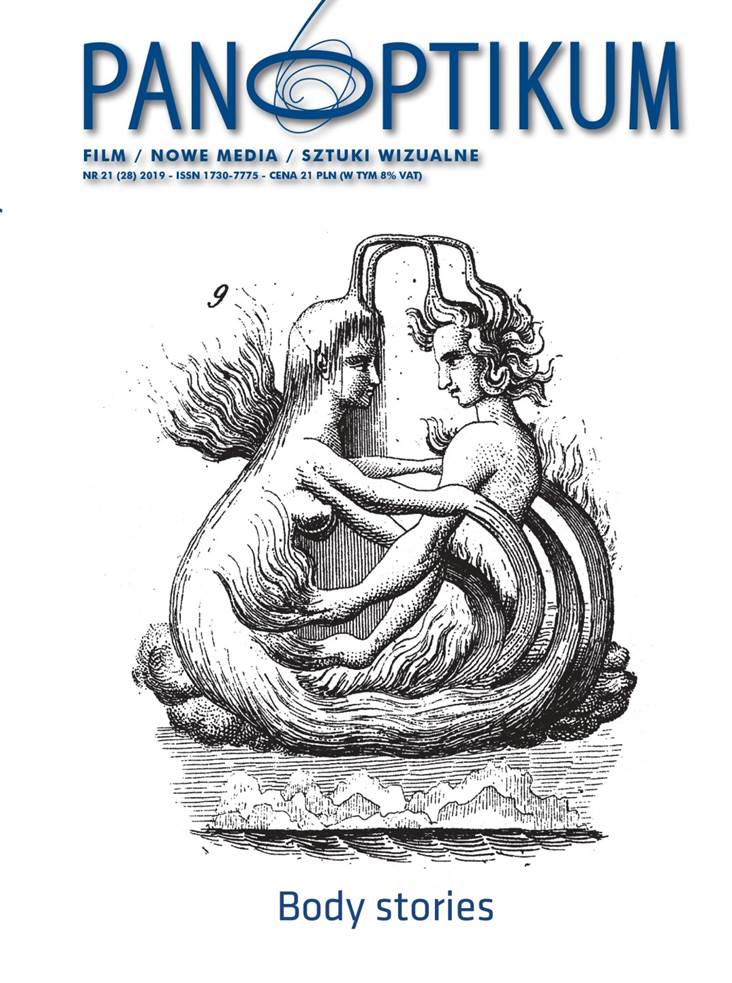Becoming liminal – existence in anti-structure
DOI:
https://doi.org/10.26881/pan.2019.21.02Słowa kluczowe:
liminality, liminal lives, bio art, biology, nature, cultureAbstrakt
This paper is based both on my empirical experience, related to the implementation of artistic projects in biological laboratories, and on theoretical consideration. It focuses on the cultural and biological meaning of liminality. First, I introduce the idea of liminality derived from anthropology, and more precisely from the theory of the trigeminal structure of ritual as formulated by Arnold van Gennep and developed by Victor Turner. Then, to those anthropological theories pertaining to culture I add the voice of Susan Merill Squier, who draws attention to the fact that technological changes around our corporeality should affect the expansion of liminality and its biological significance. Finally, I refer to her concept of the existence of liminal beings − non-human agents living in the area of the in-between, between any current form of embodiment and a future one. In Squier’s opinion in being humans we become liminal while coexistence with liminal beings can help us to pass this important bio cultural ritual. I would like to post the question: what does this coexistence look like? Can bioart create an opportunity for this coexistence?
Downloads
Bibliografia
Council for International Organizations of Medical Sciences (CIOMS), International Ethical Guidelines for Biomedical Research Involving Human Subjects, Geneva 2002.
Gennep, Arnold van. (1909), The Rites of Passage, Chicago: University of Chicago Press.
Karafyllis, C. Nicole. (2008), Ethical and epistemological problems of hybridizing living beings: Biofacts and body shopping. [in:] Hans Poser and Wenchao Li (Ed.): The Ethics of Today’s Science and Technology. A German-Chinese Approach, Muenster: LIT Publisher.
Knorr Cetina, K. (1999), Epistemic culture. How the sciences make knowledge, London: Harvard University Press.
Latour B. (2010). Splatając na nowo to, co społeczne. Wprowadzenie do teorii aktora-sieci, Kraków: Universitas.
Rabinow, P. (1999), French DNA: Trouble in Purgatory, Chicago: University of Chicago Press.
Squier, M. Susan. (2004). Liminal Lives: Imagining the Human at the Frontiers of Biomedicine, Duke University Press.
Skloot R. (2011), The Immortal Life of Henrietta Lacks, Random House Lcc Us.
The Nuremberg Code (in:) Trials of War Criminals before the Nuremberg Military Tribunals, Washington, D.C., US Government Printing Office 1949, vol.II, pp. 181-182.
Turner, V. (1977), The Ritual Process: Structure and Anti-structure, Ithaca: Cornell University Press.
Turner, V., Brunner. (2011), Antropologia doświadczenia, (transl. E. Klekot, A. Szurek), Kraków: Wydawnictwo Uniwersytetu Jagiellońskiego.
WHO, Handbook of Good Clinical Research Practice (GCP). Guidance for Implementation, Geneva 2005.
World Medical Association (WMA), Declaration of Helsinki, Ethical Principles for Medical Research Involving Human Subjects, Helsinki 1964-Seoul 2008.
Żylińska, J. (2013), Bioetyka w epoce nowych mediów, Warszawa: Instytut Badań Literackich PAN.

 Uniwersyteckie Czasopisma Naukowe
Uniwersyteckie Czasopisma Naukowe









